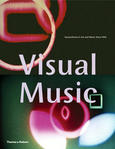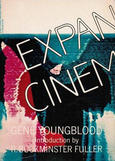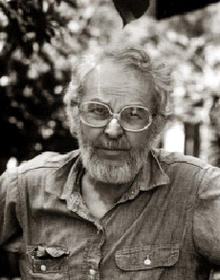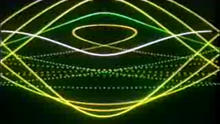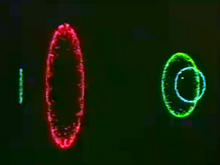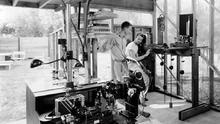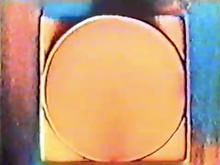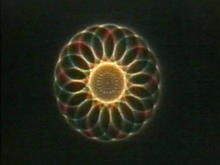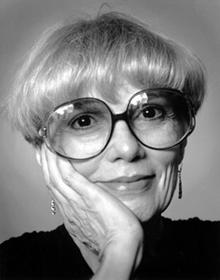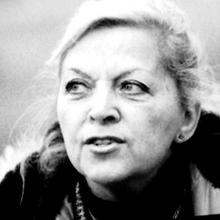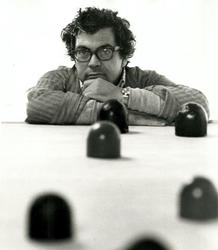Catalog
(1961)- John Whitney, Sr.'s sample reel was artfully edited and ended with a lovely final image of a lissajous curve multiplied dozens of times, to appear twisting in waves, suggesting the time-lapse of a blossoming flower.
John Whitney's demo reel of work created with his analog computer/ film camera magic machine he built from a WWII anti-aircraft gun sight. Also Whitney and the techniques he developed with this machine were what inspired Douglas Trumbull (special fx wizard) to use the slit scan technique on the Star Gate sequence in Stanley Kubrick's 2001: A Space Odyssey.
Source: William Moritz


